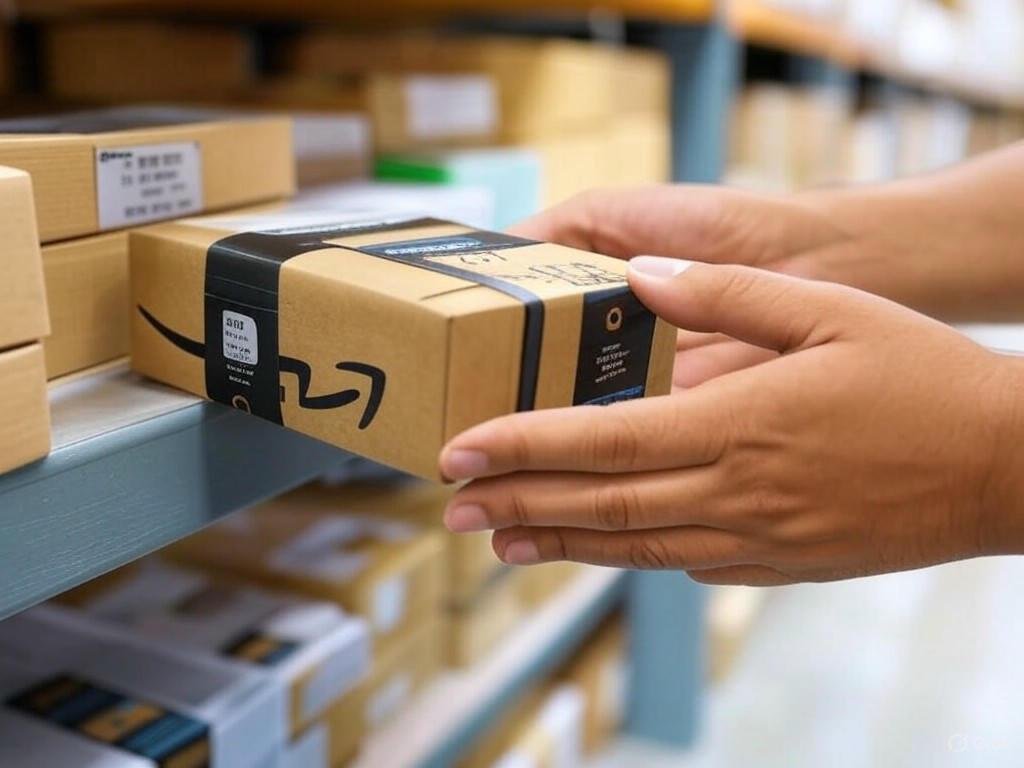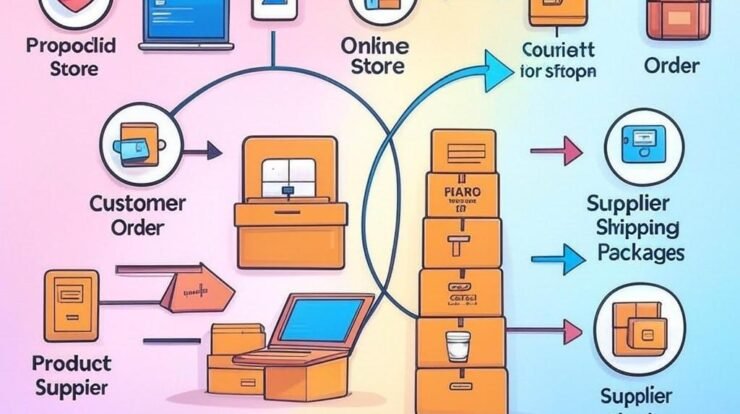I still remember the moment I decided I wanted to break free from the 9-to-5 grind. It was a rainy Tuesday evening, and I was sitting at my desk, staring at a spreadsheet that seemed to mock my dreams of financial independence. Like so many others, I craved a way to earn money without trading every waking hour for it. That’s when I stumbled across the idea of making passive income on Amazon. It sounded almost too good to be true—a way to leverage the world’s largest online marketplace to create streams of income that could flow even while I slept. Spoiler alert: it wasn’t a get-rich-quick scheme, but it was a game-changer.
In this article, I’m going to walk you through how to make passive income on Amazon, sharing the methods I’ve tried, the mistakes I’ve made, and the lessons I’ve learned along the way. Whether you’re a complete beginner or someone who’s dabbled in online businesses before, my goal is to give you a clear, actionable roadmap to start your own journey. Let’s dive in!
Why Amazon? The Power of a Global Marketplace

Amazon isn’t just a place to buy books or gadgets—it’s a massive ecosystem that millions of people interact with every day. In 2024, Amazon reported over 2.5 billion monthly visitors worldwide. That’s a lot of potential customers. For someone looking to generate passive income, Amazon offers unparalleled opportunities because of its scale, trust, and infrastructure. You don’t need to build a website from scratch or spend thousands on marketing to get eyes on your products. Amazon’s already done the heavy lifting.
But here’s the thing: passive income doesn’t mean “no work.” It means doing the work upfront to set up systems that eventually run with minimal effort. Amazon provides several ways to do this, from selling physical products to publishing eBooks to leveraging affiliate marketing. I’ve tried a few of these myself, and I’ll break down the ones that worked best for me (and a couple that didn’t).
Method 1: Selling Physical Products with Amazon FBA
The first method I explored was Amazon’s Fulfillment by Amazon (FBA) program. If you’re not familiar, FBA lets you sell physical products while Amazon handles storage, shipping, and customer service. Sounds dreamy, right? Well, it can be, but it’s not without its challenges.
How It Works
With FBA, you find a product to sell, source it (often from a supplier via platforms like Alibaba), and ship it to Amazon’s warehouses. When a customer buys your product, Amazon takes care of the rest. Your job is to choose a profitable product, optimize your listing, and manage inventory.
My Experience
I started with FBA about two years ago, and let me tell you, the learning curve was steep. My first product was a set of silicone baking mats. I thought I’d struck gold—low competition, decent demand, and a reasonable profit margin. I spent weeks researching suppliers, designing packaging, and crafting a listing with keywords like “non-stick baking mats” and “eco-friendly kitchen tools.” But then reality hit: my mats arrived with a weird chemical smell, and my first batch got a handful of one-star reviews. Ouch.
That was a tough lesson, but it taught me the importance of quality control. I ended up switching suppliers and relaunching the product. By optimizing my listing with high-quality photos, a compelling bullet-point list, and a competitive price, I started seeing sales trickle in. Within six months, I was making about $500 a month in profit—not life-changing, but a solid start.
Tips for Success with FBA
If you’re thinking about trying FBA, here are some tips I wish I’d known from the start:
Do thorough product research. Use tools like Jungle Scout or Helium 10 to find products with high demand and low competition. Look for items priced between $15 and $50 with at least 300 monthly sales.
Focus on quality. Test samples before committing to a large order. A bad product can tank your reputation.
Optimize your listing. Use keywords like “how to make passive income with Amazon FBA” or “best products for Amazon FBA” naturally in your title and description. Include clear, professional photos and detailed bullet points.
Start small. You don’t need to invest $10,000 upfront. Begin with a small batch to test the waters.
FBA isn’t truly passive—you’ll need to monitor inventory and tweak your listings occasionally—but once it’s running smoothly, it can generate consistent income with minimal daily effort.
Read more: ToonReel review – A Comprehensive Insight
Method 2: Publishing eBooks with Kindle Direct Publishing (KDP)

If selling physical products sounds like too much hassle, Kindle Direct Publishing (KDP) might be your ticket to passive income on Amazon. KDP lets you publish eBooks and paperbacks that are sold on Amazon’s Kindle Store, and it’s one of the easiest ways to get started.
How It Works
With KDP, you write (or outsource) a book, format it for Kindle, and upload it to Amazon. You set the price, and Amazon pays you royalties—up to 70% for eBooks priced between $2.99 and $9.99. The beauty of KDP is that once your book is live, it can sell for years with little to no maintenance.
My Experience
I’ll be honest: I’m no literary genius. But I love researching and sharing knowledge, so KDP felt like a natural fit. My first eBook was a 50-page guide called Meal Prep for Busy Moms. I noticed a gap in the market for short, practical guides that didn’t overwhelm readers with fluff. I spent about a month writing it, hired a freelance editor for $200, and paid $50 for a professional cover design.
When I launched the book, I used Amazon’s free promotion tool to give it away for five days. That boosted its visibility, and I started getting organic sales. Today, that book earns me about $200 a month, and I’ve since published three more in similar niches. It’s not enough to retire on, but it’s money I earn while binge-watching my favorite shows.
Tips for Success with KDP
Here’s what I learned from my KDP journey:
Find a niche. Use tools like Publisher Rocket to identify underserved topics with decent search volume. Keywords like “how to make passive income with Kindle publishing” or “best KDP niches” can guide your research.
Invest in quality. A poorly edited book with a generic cover won’t sell. Spend a little on professional editing and design.
Write what you know. If you’re passionate about a topic, your enthusiasm will shine through, and readers will connect with it.
Promote strategically. Use social media, email lists, or Amazon Ads to drive initial sales and reviews.
KDP is one of the most passive methods on this list. Once your book is live, you can let Amazon’s algorithm do the heavy lifting.
Method 3: Amazon Affiliate Marketing
If you already have a blog, YouTube channel, or social media following, Amazon’s Affiliate Program (also called Amazon Associates) is a fantastic way to earn passive income. Even if you don’t have an audience yet, you can start small and scale up.
How It Works
With Amazon Associates, you earn a commission (typically 1-10%) for every purchase made through your affiliate links. You can promote any product on Amazon, from gadgets to books to household goods. The key is creating content that drives traffic to your links.
My Experience
I started experimenting with affiliate marketing about a year ago when I launched a niche blog about outdoor gear. I wrote detailed reviews of camping equipment, like “The Best Portable Camping Stoves for 2025,” and embedded Amazon affiliate links. At first, I was lucky to make $10 a month. But as my blog gained traction and ranked for keywords like “how to make passive income with Amazon affiliate marketing,” my earnings grew. Last month, I made $400 in commissions, and I’m aiming to double that by next year.
The biggest challenge was learning SEO (search engine optimization). I spent hours researching keywords, optimizing my posts, and building backlinks. It was time-consuming, but now that my posts are ranking on Google, I’m seeing steady traffic and commissions with minimal effort.
Tips for Success with Affiliate Marketing
Here’s what worked for me:
Create valuable content. Write in-depth reviews, comparison guides, or how-to articles that genuinely help your readers. For example, a post titled “How to Make Passive Income on Amazon with Affiliate Links” could attract the right audience.
Use SEO best practices. Include keywords naturally, write compelling meta descriptions, and aim for at least 1,500 words per post to rank well.
Diversify your links. Promote a mix of high-ticket items (like electronics) and low-cost products (like books) to maximize commissions.
Be patient. Affiliate marketing takes time to build momentum, but once your content ranks, it can generate income for years.
Affiliate marketing is perfect if you enjoy creating content and want a low-risk way to earn passive income.
Read more: Get Paid to Do Surveys Online – Your Ultimate Guide to Earning Through Feedback
Common Mistakes to Avoid
No matter which method you choose, there are pitfalls that can derail your progress. Here are the biggest mistakes I made (so you don’t have to):
Expecting instant results. Passive income takes time to build. Whether it’s FBA, KDP, or affiliate marketing, you’ll need to invest effort upfront.
Ignoring competition. Launching a product or book in a saturated market is a recipe for failure. Always research your niche thoroughly.
Neglecting customer feedback. Bad reviews can sink your FBA product or eBook. Respond to feedback and improve where possible.
Skipping the learning phase. I wasted months because I didn’t invest in proper education. Take a course, read blogs, or watch YouTube tutorials to shortcut your success.
The Emotional Rollercoaster of Building Passive Income
I won’t sugarcoat it: building passive income on Amazon is a journey filled with highs and lows. There were moments when I wanted to give up—like when my first FBA product flopped or when my blog got zero traffic for months. But there were also moments of pure joy, like seeing my first $100 day from KDP or waking up to an unexpected affiliate commission.
What kept me going was the vision of financial freedom. Every hour I spent learning, tweaking, and experimenting was an investment in a future where I could spend more time with my family, travel, or simply live life on my terms. That’s the power of passive income—it’s not just about money; it’s about reclaiming your time.
Read more: Genuine Website to Earn Money – Proven Platform for Income
Getting Started: Your First Steps
Ready to start your own journey? Here’s a simple plan to make passive income on Amazon:
1. Choose a method. If you’re creative, try KDP. If you love research, go for FBA. If you enjoy writing or content creation, start with affiliate marketing.
2. Educate yourself. Spend a week learning the basics. There are tons of free resources on YouTube and blogs, or invest in a course for faster results.
3. Take action. Start small—publish one eBook, launch one FBA product, or write one blog post. Momentum builds with action.
4. Track and tweak. Monitor your results and adjust your strategy. Passive income is about testing and optimizing.
Final Thoughts: Your Path to Passive Income Awaits
When I started exploring how to make passive income on Amazon, I was skeptical. Could I really build a business that paid me while I slept? Two years later, I’m proof that it’s possible—not overnight, but with persistence and a willingness to learn. Today, my Amazon ventures earn me a steady $1,200 a month, and I’m constantly tweaking my strategy to grow that number.
Amazon isn’t a magic bullet, but it’s a powerful platform for anyone willing to put in the work. Whether you choose FBA, KDP, or affiliate marketing, the key is to start, experiment, and keep going. Your financial freedom is worth it.
So, what are you waiting for? Pick a method, take that first step, and let me know how it goes. I’m rooting for you!





